You might not notice them at first glance, yet these slim borders along the base of the wall do more than you might think. Whether it is the strong lines of black skirting tiles, the classic polish of marble skirting, or the durability of granite, these finishing touches help hold the room’s story together.

In this blog, we will take a closer look at skirting tiles and explore why they deserve far more attention than they receive. We will break down their purpose, design options, material choices, and how to use them as a finishing touch that not only completes your space but also transforms it.
What Is Skirting, Really?
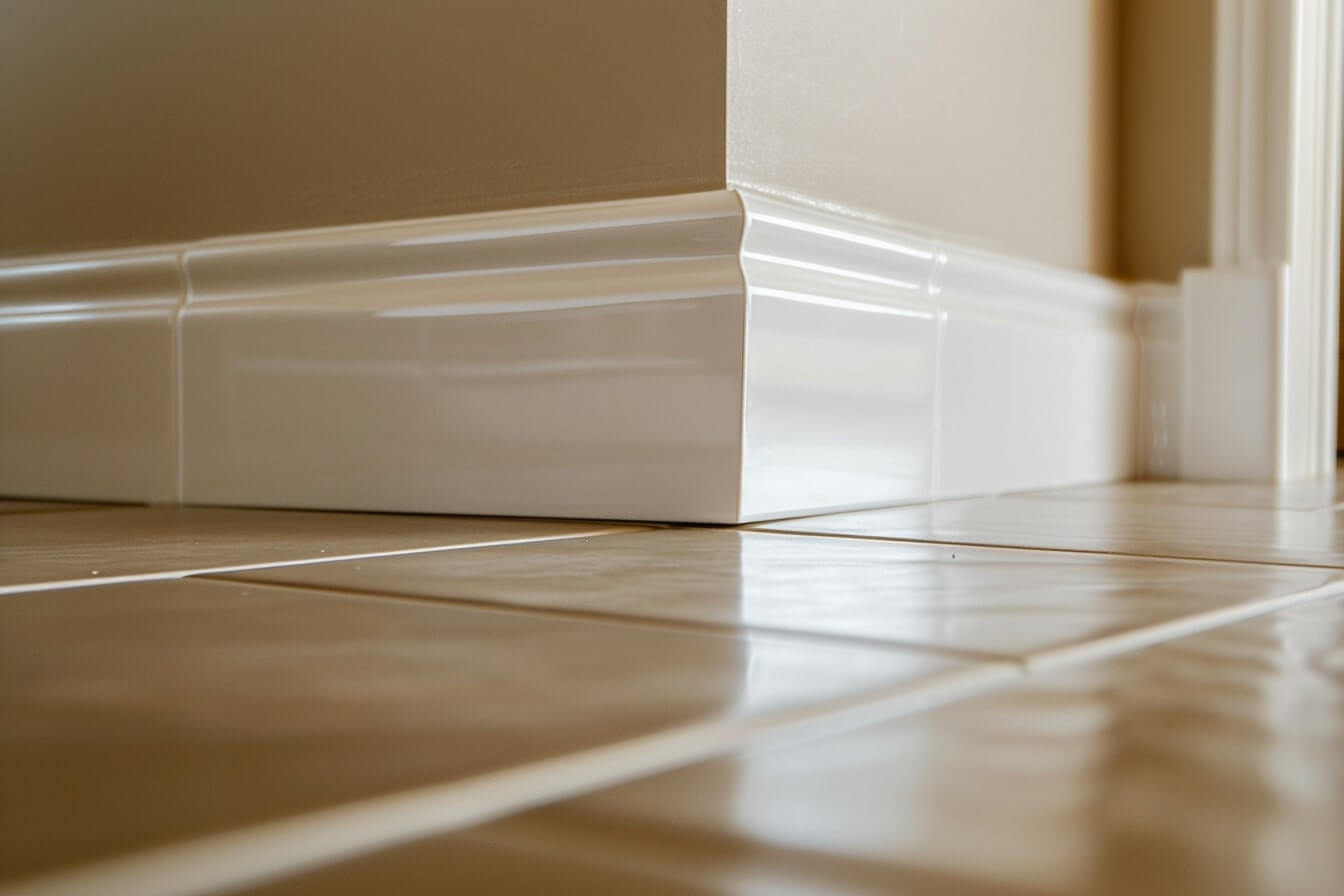
Skirting, also known as a skirting board or tile, runs along the bottom of interior walls where they meet the floor. Though easy to overlook, it plays a vital role in both form and function, covering gaps, protecting walls from damage, and creating a neat transition. Traditionally practical, skirting has evolved into a design element available in a variety of materials, finishes, and styles. From classic wood to modern tile or PVC. It can blend in or stand out, matching or contrasting with the flooring. Skirting also visually grounds a room, giving it a more polished, complete look. It’s a subtle detail that can make a big impact.
Why It Deserves More Attention
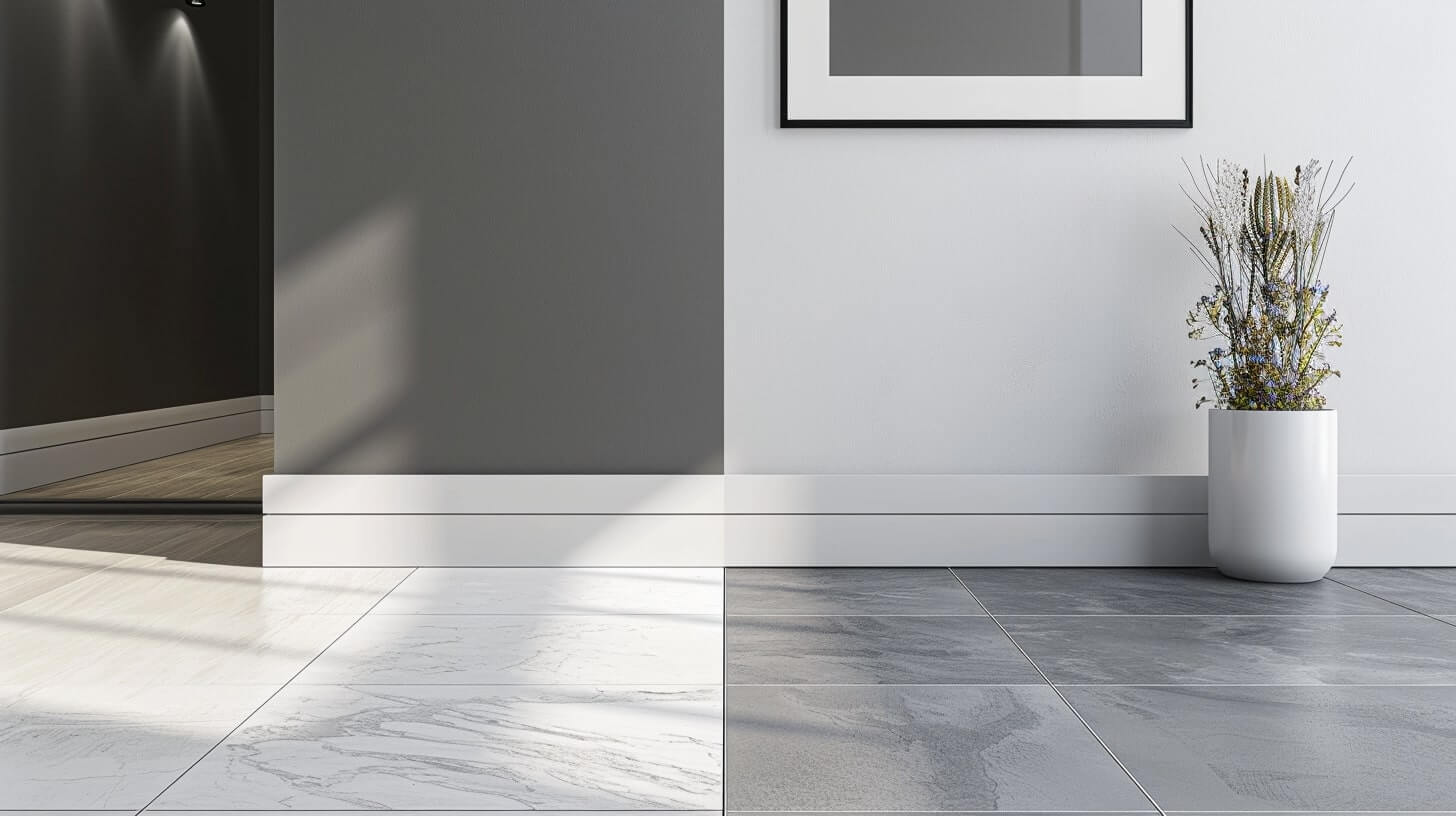
There is something oddly satisfying about seeing a clean joint between the wall and the floor. That seamless look? Often, the work involves well-installed floor skirting tiles. They mask untidy edges, seal off gaps, and make cleaning easier. But beyond all that, they can quietly enhance the room’s design. Choose the right skirting tile design, and it shifts from a background player to a subtle style statement.
Create Flow with Matching Skirting
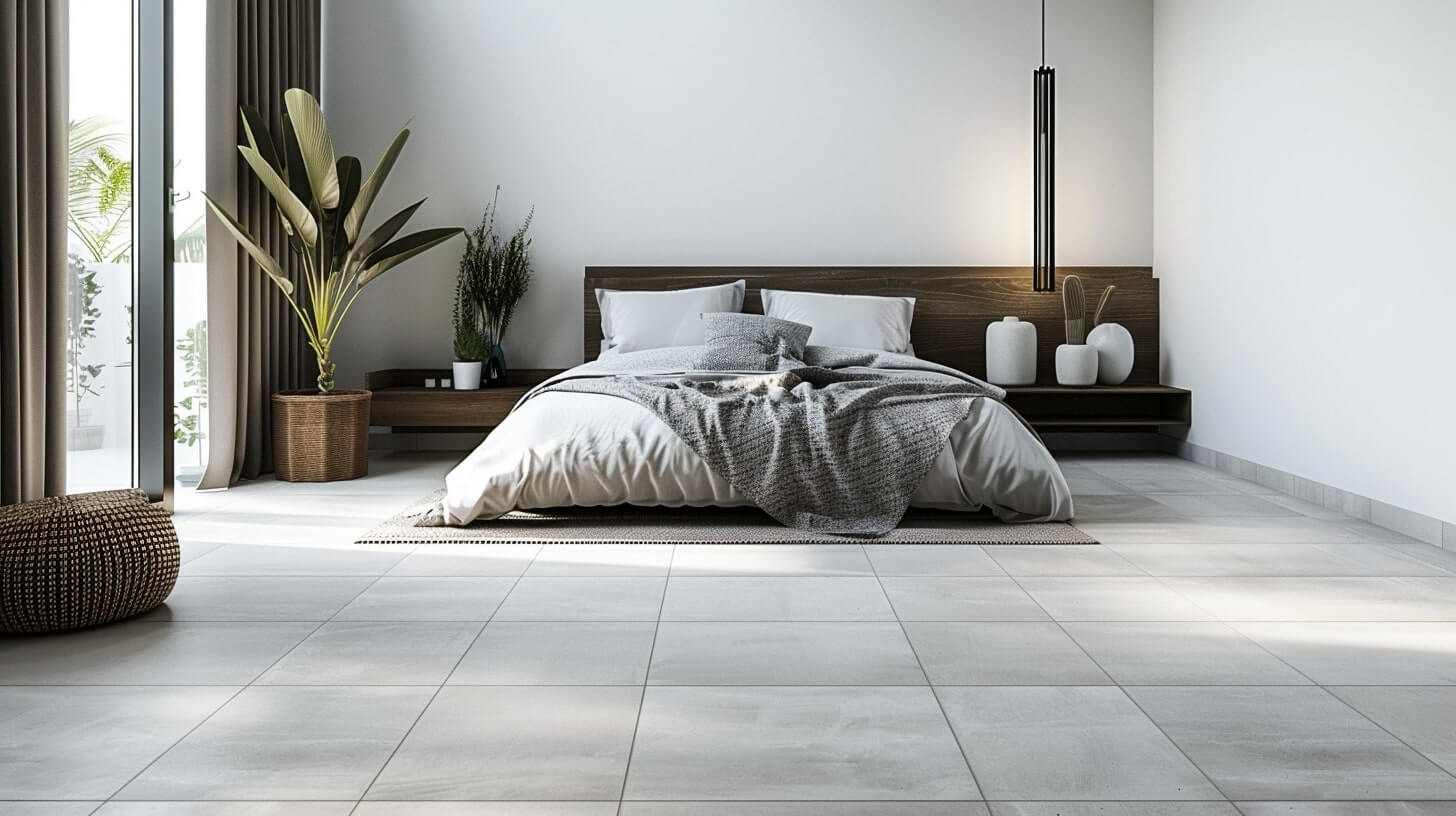
If you want a calm, open feel in smaller rooms, using the same material and colour for both floor and skirting works well. It blurs the boundary between them, creating a smooth transition that makes the space feel larger. Matching tiles turn the skirting into a subtle extension of the floor, helping the eye move easily across the room. This works especially well in minimalist or modern interiors, where clean, simple lines are paramount.
Add Contrast for Character
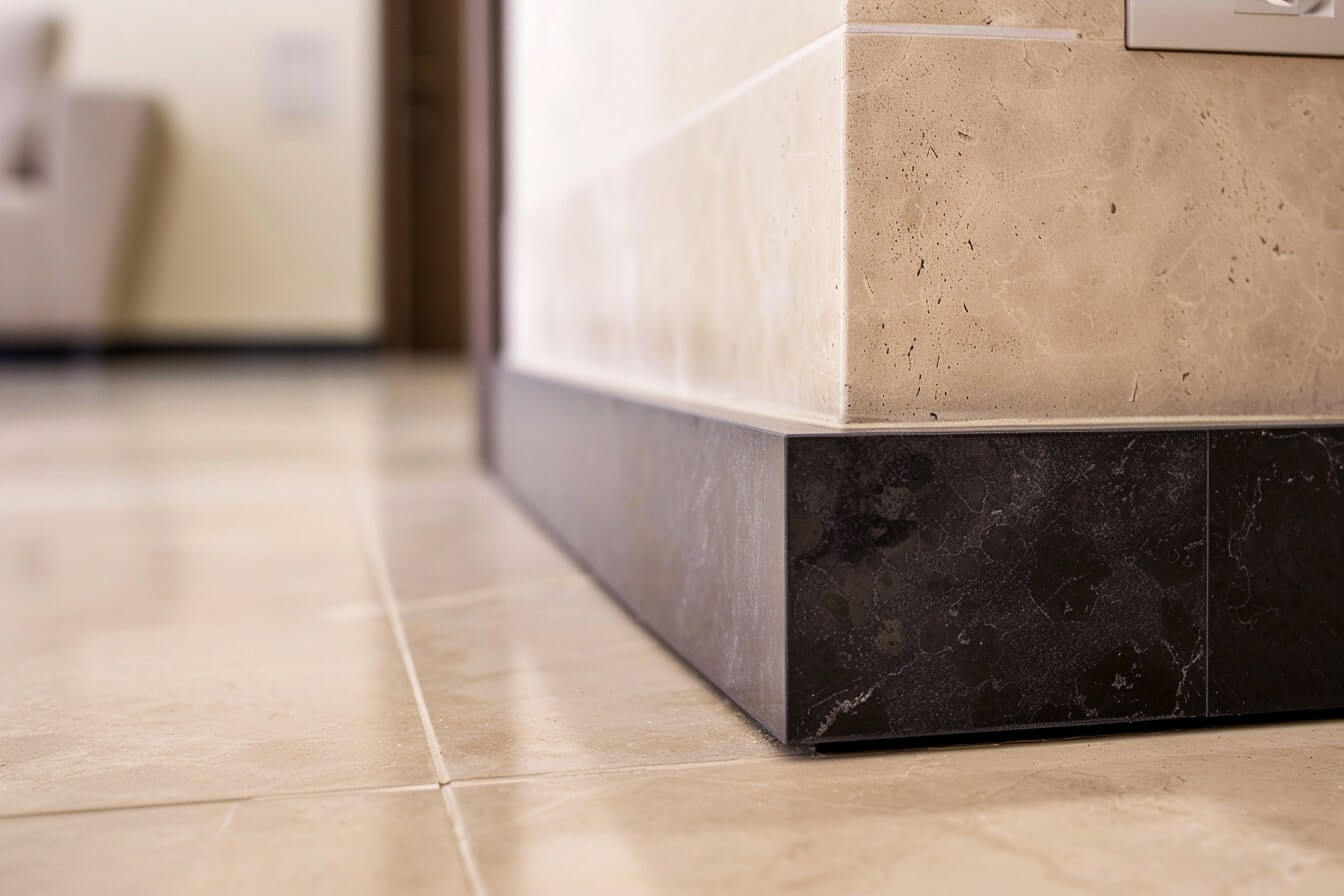
On the other hand, if you are after a little drama, contrast can add just the right amount of edge. Consider light flooring paired with black tile skirting; it draws your eye outward, adds definition, and frames the room beautifully. This style is popular in modern and industrial homes, where crisp lines and bold contrasts are central to the aesthetic.
Even a slight shift in tone or texture can make a difference. A grainy dark border against smooth tiles, for instance, can introduce subtle complexity without going over the top.
Materials That Stand the Test of Time
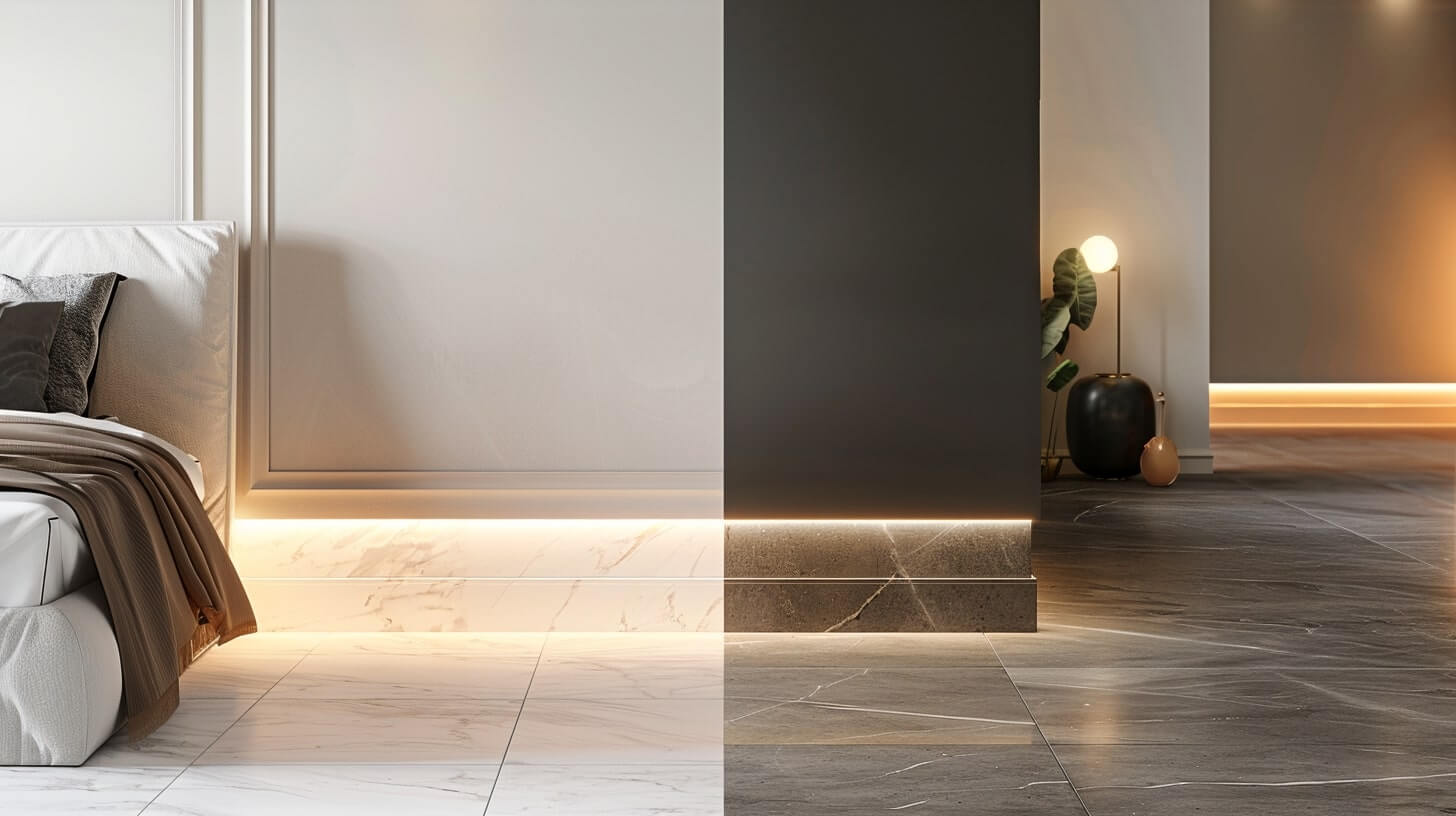
Some materials have remained unchanged over the years. Take marble skirting, it brings a quiet luxury that feels at home in bedrooms or reading nooks. Then there is granite skirting, which is less about show and more about sheer strength. It is ideal for areas that experience high traffic, such as kitchens or hallways. If you are weighing longevity alongside style, these two options are hard to beat.
Smarter Skirting Features for Today’s Homes
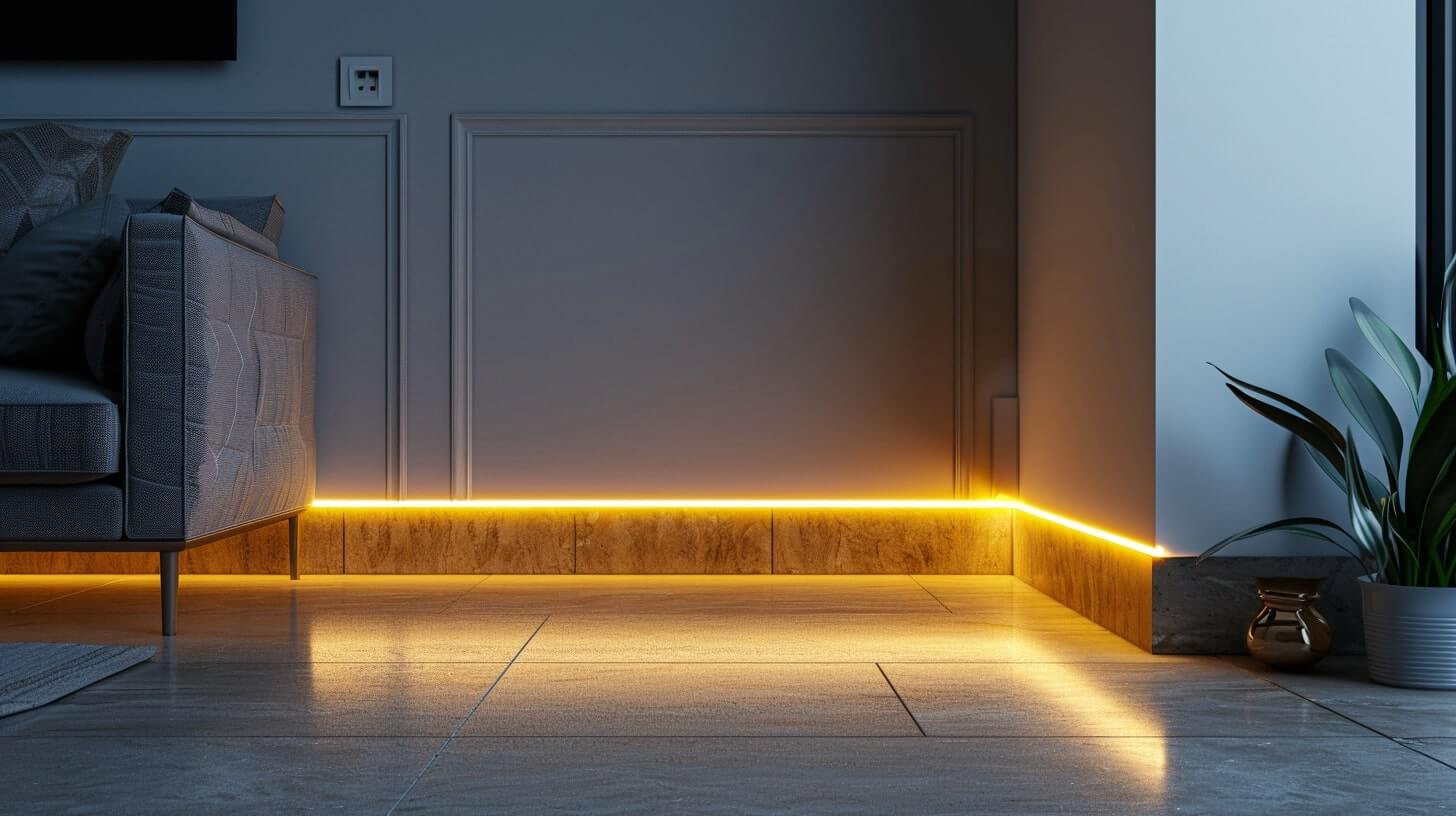
Modern homes demand more than just looks. And skirting tiles have caught up. You will now find options with built-in LED strips that gently light up your walkway. Others come with hidden channels for wires, a clever way to keep things tidy without sacrificing style.
These extra features not only improve functionality, but also push the skirting tiles design into a more contemporary space. It is about subtle upgrades that make daily life easier and your interiors sharper.
Picking the Right Height Matters Too

If you want a calm and cohesive look, especially in compact rooms, matching the floor and skirting tiles in both colour and material can make a noticeable difference. It blurs the boundary between the two, creating a smooth visual flow that makes the space feel larger and more open. This subtle design move seamlessly integrates the skirting into the floor, creating a quiet extension that is ideal for minimalist or modern interiors.
Much like curtain length or where you hang art, skirting height matters more than you might expect. A shorter skirting can seem like an afterthought, while a taller one helps elongate the walls and gives the room a more tailored and finished feel.
For Most Indian Homes
Generally, a height of 2.5 to 4 inches is suitable for homes with standard ceiling heights. It offers protection without overwhelming the wall.
For Larger or Taller Rooms
If your space has high ceilings or a more spacious layout, consider going up to 6 inches. This taller skirting adds elegance and works well with heavy panelling or decorative wall features. In tighter spaces, stick to under 2.5 inches for a more minimalist finish.
What Works Where: Room-by-Room Guide
Living Room

In shared spaces, the skirting should echo the overall style. If you are using wood-effect flooring, warm tones like taupe or biscuit for wall skirting tiles offer subtle charm. For a modern, minimalist look, opt for tone-on-tone for a cleaner finish.
Kitchen
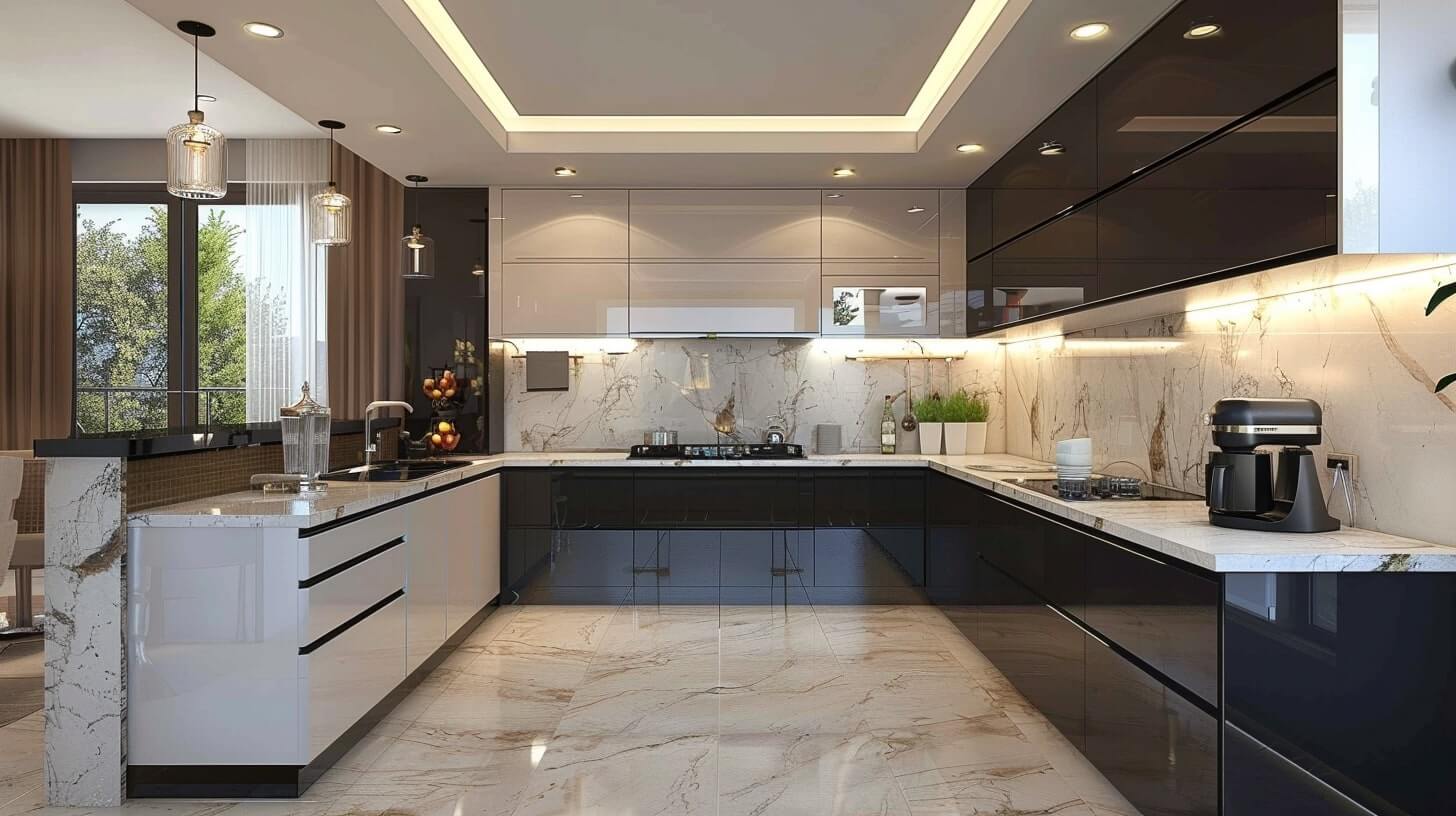
Here, functionality leads. The best bet? Granite skirting or vitrified tiles. They resist spills, heat, and scrubbing. Make sure the installation is tight and sealed to prevent moisture from seeping behind the tile.
Bedroom
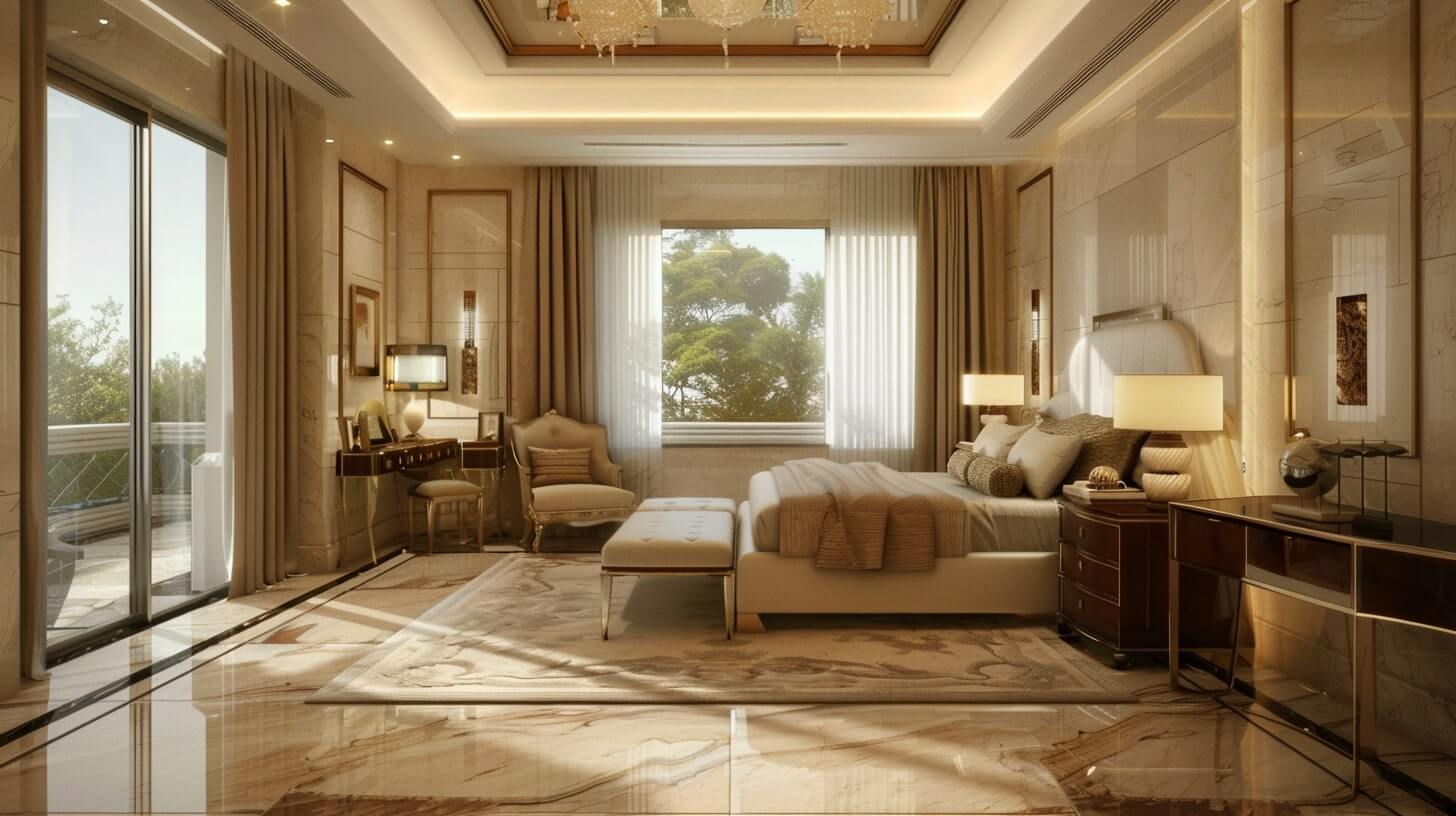
In restful zones, aesthetics matter more. Marble skirting in creamy or neutral tones adds a quiet richness. If you’re on a budget, ceramic or porcelain tiles do the job nicely while still looking polished.
Bathroom

This is where hygiene takes centre stage. Bathroom skirting should be made from water-resistant materials, such as vitrified or ceramic tiles. They are easy to clean and resist mildew. Precision in installation is important, especially in areas with high moisture content, such as around wet zones.
Skirting vs Dado: Know the Difference
| Aspect | Skirting | Dado |
| Placement | Bottom edge of the wall, near the floor | Middle or lower half of the wall, above the skirting |
| Primary Purpose | Covers the joint between the wall and the floor; protects from scuffs | Protects walls from stains, splashes, and physical damage |
| Height | Typically 2 to 6 inches (can vary based on design) | Usually 2.5 to 4 feet high from the floor |
| Common Materials | Tiles, wood, PVC, stone, MDF | Tiles, decorative panels, wood, or washable paint |
| Usage Areas | Everywhere: living rooms, bedrooms, corridors | Mostly in kitchens, bathrooms, dining areas, or passageways |
| Design Impacts | Subtle, helps frame the room visually | Decorative, can act as a design highlight or accent |
Tips for Getting the Skirting Right
A few practical suggestions that go a long way when working with skirting tiles:
- Match the grout colour to the tile for a cleaner, more unified appearance. When the grout blends in, it keeps the focus on the material rather than the lines, making the space look more seamless and intentional.
- Prepare the wall surface properly: Make sure it’s smooth, dry, and level. Any imperfections behind the tile can affect the finish and longevity of the skirting, so take your time with this step to ensure a smooth finish.
- Use tile spacers during installation to maintain even gaps and perfect alignment. It’s a simple tool that makes a noticeable difference in the final result’s appearance and overall polish.
- Consider adding skirting beading where needed to soften sharp transitions between surfaces. It can help create a more finished edge, especially where walls meet floors at awkward angles or with uneven joints.
Budgeting: What to Expect
Let us talk numbers. The skirting tiles price varies based on material and style.
- Basic ceramic options start from around ₹25 per square foot.
- Premium natural stones, such as marble, can cost upwards of ₹200 per square foot.
- Labour typically adds ₹20 to ₹40 per square foot
Conclusion: It Is All in the Details
Skirting may not be the most glamorous part of home interiors, but ignoring it can make the space feel oddly incomplete. The right tile skirting design can bring a sense of closure and sophistication that subtly lifts the entire room.
Whether you’re after the bold impact of black skirting tiles, the elegance of marble, or the strength of granite, it’s a small decision that can bring big results. It is one of those finishing touches that turns a room into a thoughtfully designed space.
At Interior Company, we know that it is the smaller choices, like the skirting running quietly along your floors, that truly finish a home. Whether you’re refreshing a single room or planning a full makeover, our designers can help you select the right details to bring your space together with care and style.
*Images used are for representational purposes only. Unless explicitly mentioned, the Interior Company does not hold any copyright to the images.*